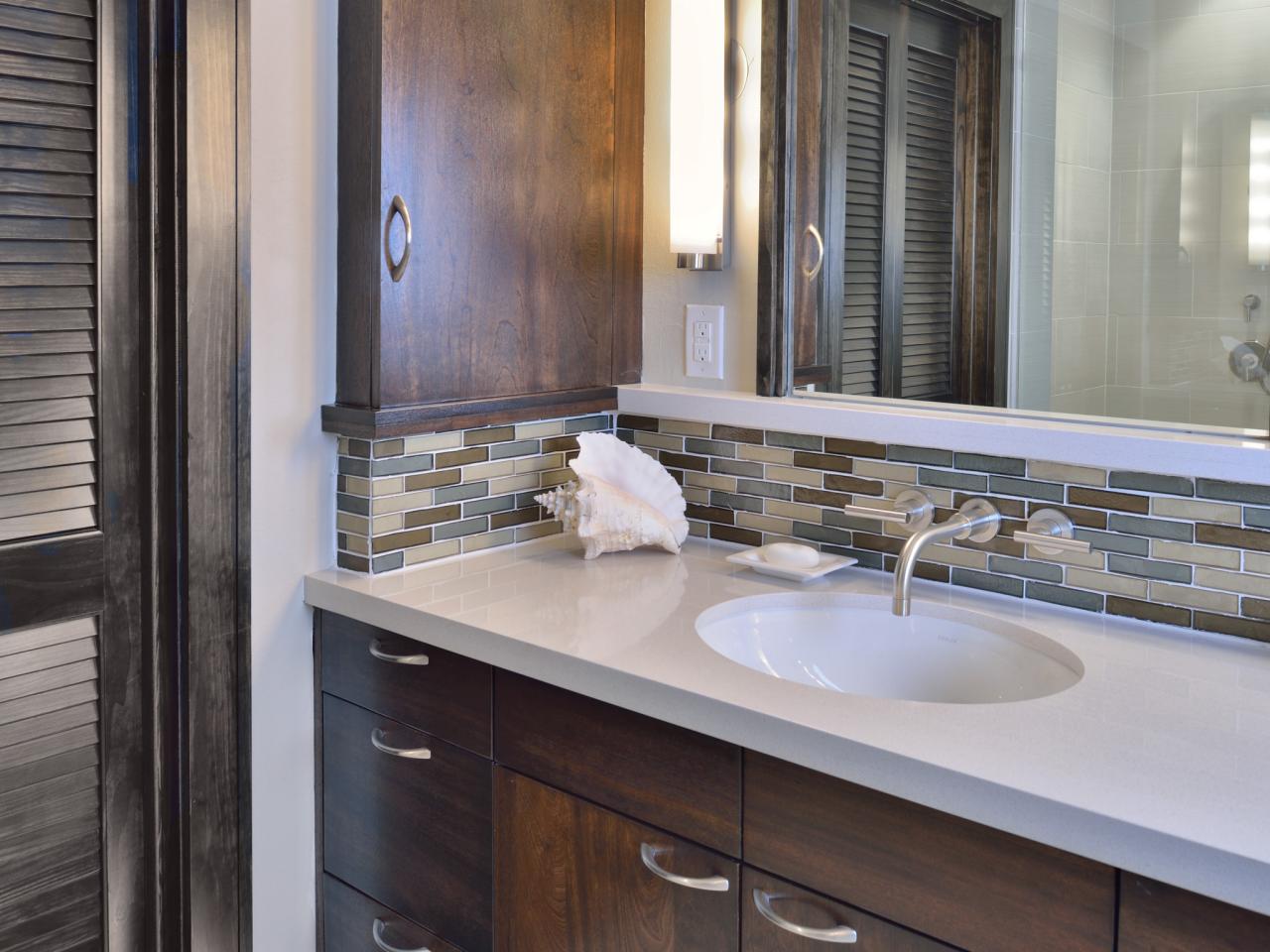When it comes to designing and renovating a bathroom, one of the most debated topics is whether or not to have a backsplash behind the bathroom sink. While some may argue that it is unnecessary and purely for aesthetic purposes, others swear by its functionality and protection. So, do you really need backsplash behind your bathroom sink? Let's explore this question in more detail.Do You Need Backsplash Behind Bathroom Sink?
Firstly, let's define what a backsplash behind a bathroom sink actually is. It is a vertical extension of the wall surface that is installed above the sink, typically made from the same material as the countertop. It is designed to protect the wall from water splashes, spills, and stains, as well as to add a decorative element to the bathroom.Backsplash Behind Bathroom Sink: What is it?
One of the main arguments for having a backsplash behind the bathroom sink is its functionality. As mentioned earlier, it acts as a protective barrier for the wall against water damage. This is especially important in a bathroom where water is constantly being used. Without a backsplash, water can seep into the drywall and cause it to rot or develop mold, leading to expensive repairs down the line. Moreover, the backsplash also serves to protect the wall from stains and discoloration caused by toothpaste, soap, or other products used at the sink. It is much easier to wipe down a backsplash than to repaint or replace the wall surface.Bathroom Sink Backsplash: Functionality
While functionality is an important factor to consider, the aesthetic appeal of a backsplash should not be overlooked. A well-designed backsplash can add a pop of color, texture, or pattern to an otherwise plain bathroom. It can also tie in with the overall design and style of the bathroom, creating a cohesive look. Furthermore, a backsplash can also make the bathroom sink area feel more polished and complete. It can act as a focal point and draw the eye, making the space more visually appealing.Backsplash for Bathroom Sink: Aesthetic Appeal
Now that we have discussed the functionality and aesthetic appeal of a backsplash behind a bathroom sink, let's consider some of the factors that may influence your decision. Frequency of Use: If the bathroom sink is used frequently, then a backsplash is highly recommended to protect the wall from water damage and stains. Type of Material: The material used for the sink and countertop may also play a role. If you have a porous material such as marble or granite, a backsplash can prevent water from seeping into it and causing damage. Budget: If you are on a tight budget, a backsplash may not be a priority. However, there are affordable options such as peel and stick backsplash tiles that can still provide protection and add style to your bathroom.Do You Need Backsplash for Bathroom Sink? Factors to Consider
If you have decided against having a backsplash behind your bathroom sink, there are some alternative options you can consider: Tile the Entire Wall: Instead of just having a backsplash, you can tile the entire wall behind the sink. This will provide even more protection and can create a sleek, modern look. Waterproof Paint: You can also opt for waterproof paint for the wall behind the sink. While it may not provide as much protection as a backsplash, it can still help prevent water damage.Backsplash Behind Sink in Bathroom: Alternatives
At the end of the day, the decision to have a backsplash behind your bathroom sink is a personal one. While it may not be necessary, it can provide added functionality and aesthetic appeal to your bathroom. Consider your budget, frequency of use, and the type of material used before making your decision. If you do decide to have a backsplash, be sure to choose a material that is durable and easy to clean. And for those who prefer a more minimalist look, a simple, neutral backsplash can still provide protection while blending in seamlessly with the rest of the bathroom.Backsplash Behind Vanity Sink: Final Thoughts
<h2>Do You Need Backsplash Behind Bathroom Sink?</h2> <p>When it comes to designing and renovating a bathroom, one of the most debated topics is whether or not to have a backsplash behind the bathroom sink. While some may argue that it is unnecessary and purely for aesthetic purposes, others swear by its functionality and protection. So, do you really need backsplash behind your bathroom sink? Let's explore this question in more detail.</p> <h2>Backsplash Behind Bathroom Sink: What is it?</h2> <p>Firstly, let's define what a backsplash behind a bathroom sink actually is. It is a vertical extension of the wall surface that is installed above the sink, typically made from the same material as the countertop. It is designed to protect the wall from water splashes, spills, and stains, as well as to add a decorative element to the bathroom.</p> <h2>Bathroom Sink Backsplash: Functionality</h2> <p>One of the main arguments for having a backsplash behind the bathroom sink is its functionality. As mentioned earlier, it acts as a protective barrier for the wall against water damage. This is especially important in a bathroom where water is constantly being used. Without a backsplash, water can seep into the drywall and cause it to rot or develop mold, leading to expensive repairs down the line.</p>
Moreover, the backsplash also serves to protect the wall from stains and discoloration caused by toothpaste, soap, or other products used at the sink. It is much easier to wipe down a backsplash than to repaint or replace the wall surface.</p> <h2>Backsplash for Bathroom Sink: Aesthetic Appeal</h2> <p>While functionality is an important factor to consider, the aesthetic appeal of a backsplash should not be overlooked. A well-designed backsplash can add a pop of color, texture, or pattern to an otherwise plain bathroom. It can also tie in with the overall design and style of the bathroom, creating a cohesive look.</p>
Furthermore, a backsplash can also make the bathroom sink area feel more polished and complete. It can act as a focal point and draw the eye, making the space more visually appealing.</p> <h2>Do You Need Backsplash for Bathroom Sink? Factors to Consider</h2> <p>Now that we have discussed the functionality and aesthetic appeal of a backsplash behind a bathroom sink, let's consider some of the factors that may influence your decision.</p>
<b>Frequency of Use:</b> If the bathroom sink is used frequently, then a backsplash is highly recommended to protect the wall from water damage and stains.</p>
<b>Type of Material:</b> The material used for the sink and countertop may also play a role. If you have a porous material such as marble or granite, a backsplash can prevent water from seeping into it and causing damage.</p>
<b>Budget:</b> If you are on a tight budget, a backsplash may not be a priority. However, there are affordable options such as peel and stick backsplash tiles that can still provide protection and add style to your bathroom.</p>
<h2>Backsplash Behind Sink in Bathroom: Alternatives</h2> <p>If you have decided against having a backsplash behind your bathroom sink, there are some alternative options you can consider:</p>
<b>Tile the Entire Wall:</b> Instead of just having a backsplash, you can tile the entire wall behind the sink. This will provide even more protection and can create a sleek, modern look.</p>
<b>Waterproof Paint:</b> You can also opt for waterproof paint for the wall behind the sink. While it may not provide as much protection as a backsplash, it can still help prevent water damage.</p>
<h2>Backsplash Behind Vanity Sink: Final Thoughts</h2> <p>At the end of the day, the decision to have a backsplash behind your bathroom sink is a personal one. While it may not be necessary, it can provide added functionality and aesthetic appeal to your bathroom. Consider your budget, frequency of use, and the type of material used before making your decision.</p>
If you do decide to have a backsplash, be sure to choose a material that is durable and easy to clean. And for those who prefer a more minimalist look, a simple, neutral backsplash can still provide protection while blending in seamlessly with the rest of the bathroom.</p>
<h2>Backsplash for Bathroom Vanity Sink: Convert to HTML Code</h2> <p><h2>Do You Need Backsplash Behind Bathroom Sink?</h2></p> <p><p>When it comes to designing and renovating a bathroom, one of the most debated topics is whether or not to have a backsplash behind the bathroom sink. While some may argue that it is unnecessary and purely for aesthetic purposes, others swear by its functionality and protection. So, do you really need backsplash behind your bathroom sink? Let's explore this question in more detail.</p></p> <p><h2>Backsplash Behind Bathroom Sink: What is it?</h2></p> <p><p>Firstly, let's define what a backsplash behind a bathroom sink actually is. It is a vertical extension of the wall surface that is installed above the sink, typically made from the same material as the countertop. It is designed to protect the wall from water splashes, spills, and stains, as well as to add a decorative element to the bathroom.</p></p> <p><h2>Bathroom Sink Backsplash: Functionality</h2></p> <p><p>One of the main arguments for having a backsplash behind the bathroom sink is its functionality. As mentioned earlier, it acts as a protective barrier for the wall against water damage. This is especially important in a bathroom where water is constantly being used. Without a backsplash, water can seep into the drywall and cause it to rot or develop mold, leading to expensive repairs down the line.</p>
Moreover, the backsplash also serves to protect the wall from stains and discoloration caused by toothpaste, soap, or other products used at the sink. It is much easier to wipe down a backsplash than to repaint or replace the wall surface.</p></p> <p><h2>Backsplash for Bathroom Sink: Aesthetic Appeal</h2></p> <p><p>While functionality is an important factor to consider, the aesthetic appeal of a backsplash should not be overlooked. A well-designed backsplash can add a pop of color, texture, or pattern to an otherwise plain bathroom. It can also tie in with the overall design and style of the bathroom, creating a cohesive look.</p>
Furthermore, a backsplash can also make the bathroom sink area feel more polished and complete. It can act as a focal point and draw the eye, making the space more visually appealing.</p></p> <p><h2>Do You Need Backsplash for Bathroom Sink? Factors to Consider</h2></p>Backsplash for Bathroom Vanity Sink: Convert to HTML Code
Why a Backsplash is Essential Behind Your Bathroom Sink
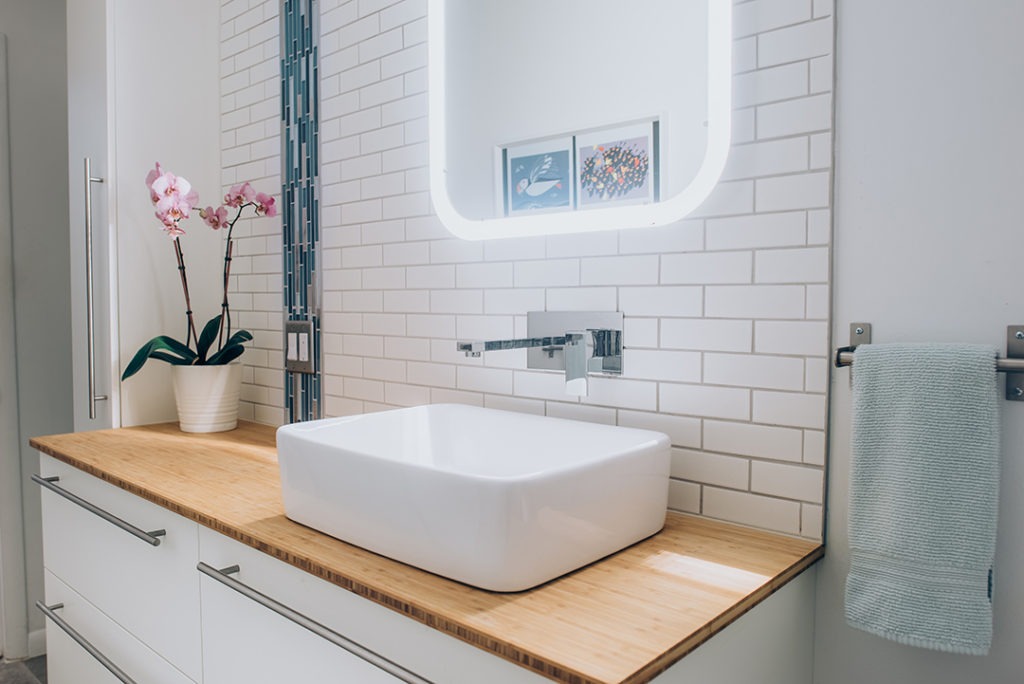
Enhances the Aesthetic Appeal of Your Bathroom
 When it comes to designing a bathroom, every detail matters. From the tiles to the fixtures, each element plays a significant role in creating a cohesive and visually appealing space. That's why
backsplashes
have become a popular choice for bathroom design, especially behind the
bathroom sink
. Not only do they add a touch of elegance to the space, but they also serve a practical purpose.
When it comes to designing a bathroom, every detail matters. From the tiles to the fixtures, each element plays a significant role in creating a cohesive and visually appealing space. That's why
backsplashes
have become a popular choice for bathroom design, especially behind the
bathroom sink
. Not only do they add a touch of elegance to the space, but they also serve a practical purpose.
Protects Your Walls from Water Damage
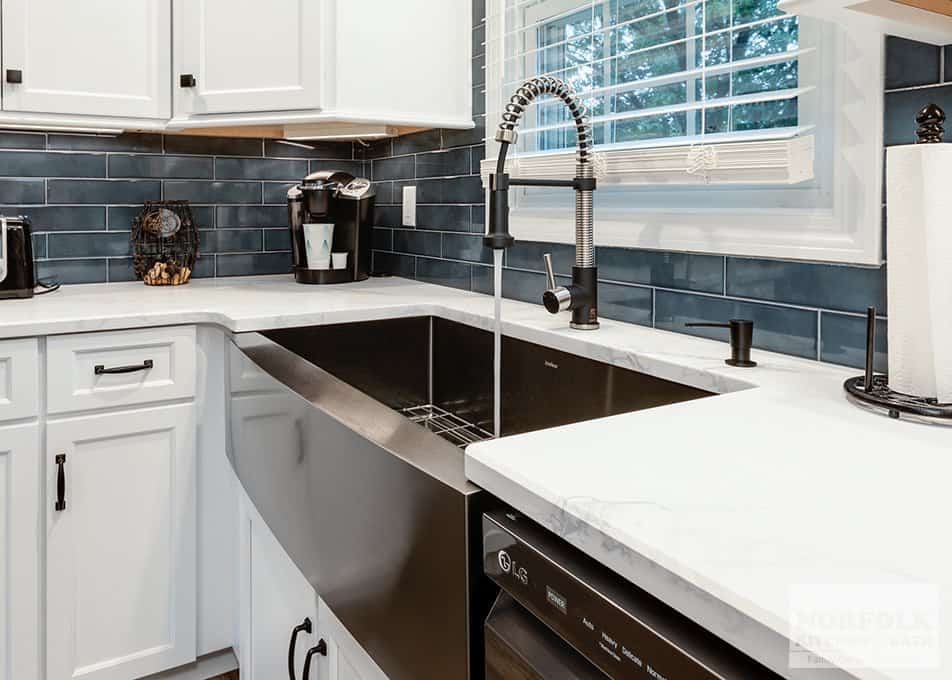 One of the main reasons for having a backsplash behind your bathroom sink is to protect your walls from water damage. With daily use, water can splash onto the walls, causing damage and promoting the growth of mold and mildew. This not only affects the appearance of your bathroom but can also be a health hazard. By having a backsplash, you create a barrier between the water and your walls, keeping them safe and dry.
One of the main reasons for having a backsplash behind your bathroom sink is to protect your walls from water damage. With daily use, water can splash onto the walls, causing damage and promoting the growth of mold and mildew. This not only affects the appearance of your bathroom but can also be a health hazard. By having a backsplash, you create a barrier between the water and your walls, keeping them safe and dry.
Easy to Clean and Maintain
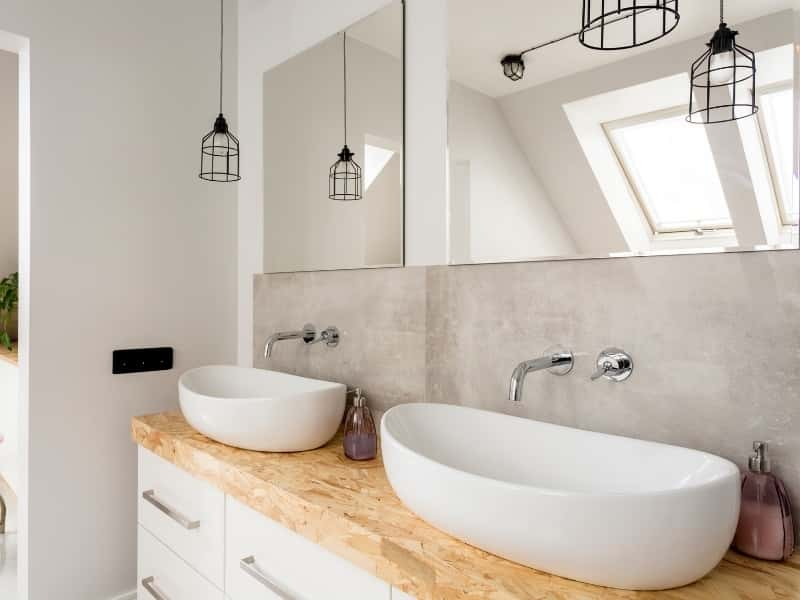 Bathrooms are a high-moisture environment, which means they require frequent cleaning. Having a backsplash behind your bathroom sink can make this task much easier. Unlike painted walls,
backsplashes
are made from materials that are resistant to water and stains, making them effortless to clean and maintain. This not only saves you time and effort but also keeps your bathroom looking pristine for longer.
Bathrooms are a high-moisture environment, which means they require frequent cleaning. Having a backsplash behind your bathroom sink can make this task much easier. Unlike painted walls,
backsplashes
are made from materials that are resistant to water and stains, making them effortless to clean and maintain. This not only saves you time and effort but also keeps your bathroom looking pristine for longer.
Adds Value to Your Home
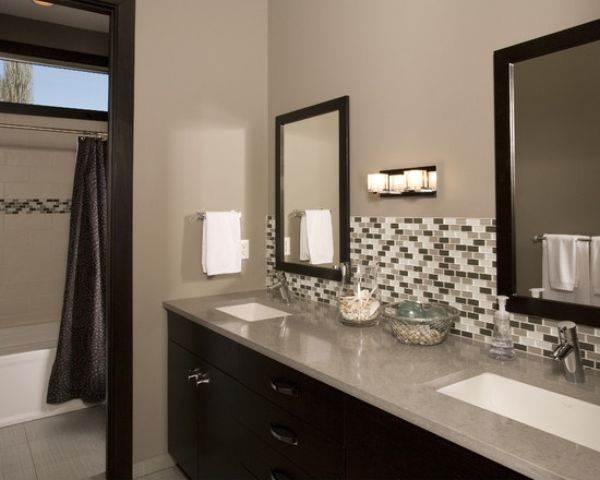 A well-designed bathroom can significantly increase the value of your home. As more and more people look for aesthetically pleasing and functional bathrooms, having a backsplash behind your bathroom sink can make your home stand out in the market. It adds a touch of luxury and sophistication, making your bathroom more attractive to potential buyers.
A well-designed bathroom can significantly increase the value of your home. As more and more people look for aesthetically pleasing and functional bathrooms, having a backsplash behind your bathroom sink can make your home stand out in the market. It adds a touch of luxury and sophistication, making your bathroom more attractive to potential buyers.
Final Thoughts
 In conclusion, having a backsplash behind your bathroom sink is not only a matter of style but also a practical choice. It adds a decorative element to your bathroom while also protecting your walls from water damage and making cleaning easier. So, if you're looking to enhance the overall aesthetic appeal of your bathroom and add value to your home, consider installing a backsplash behind your bathroom sink.
In conclusion, having a backsplash behind your bathroom sink is not only a matter of style but also a practical choice. It adds a decorative element to your bathroom while also protecting your walls from water damage and making cleaning easier. So, if you're looking to enhance the overall aesthetic appeal of your bathroom and add value to your home, consider installing a backsplash behind your bathroom sink.

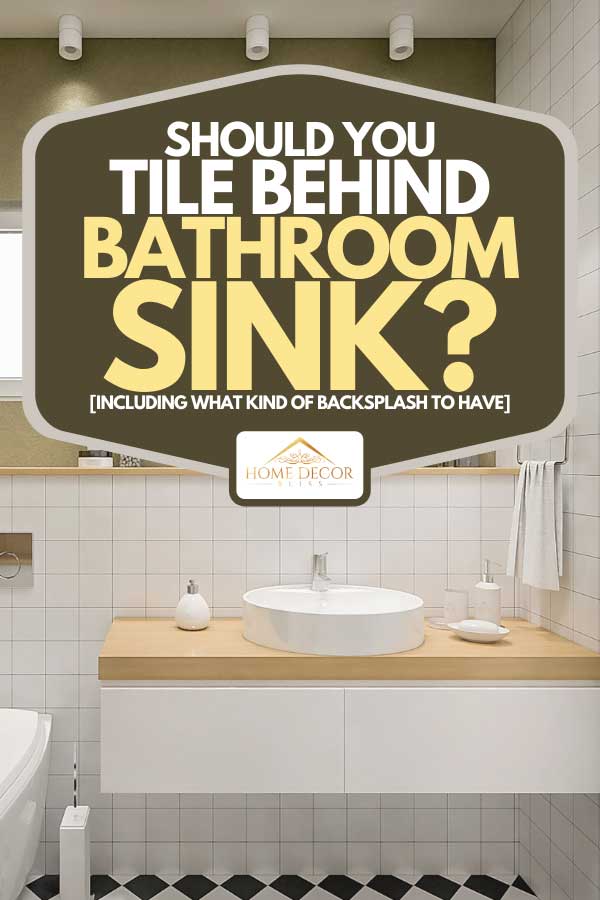




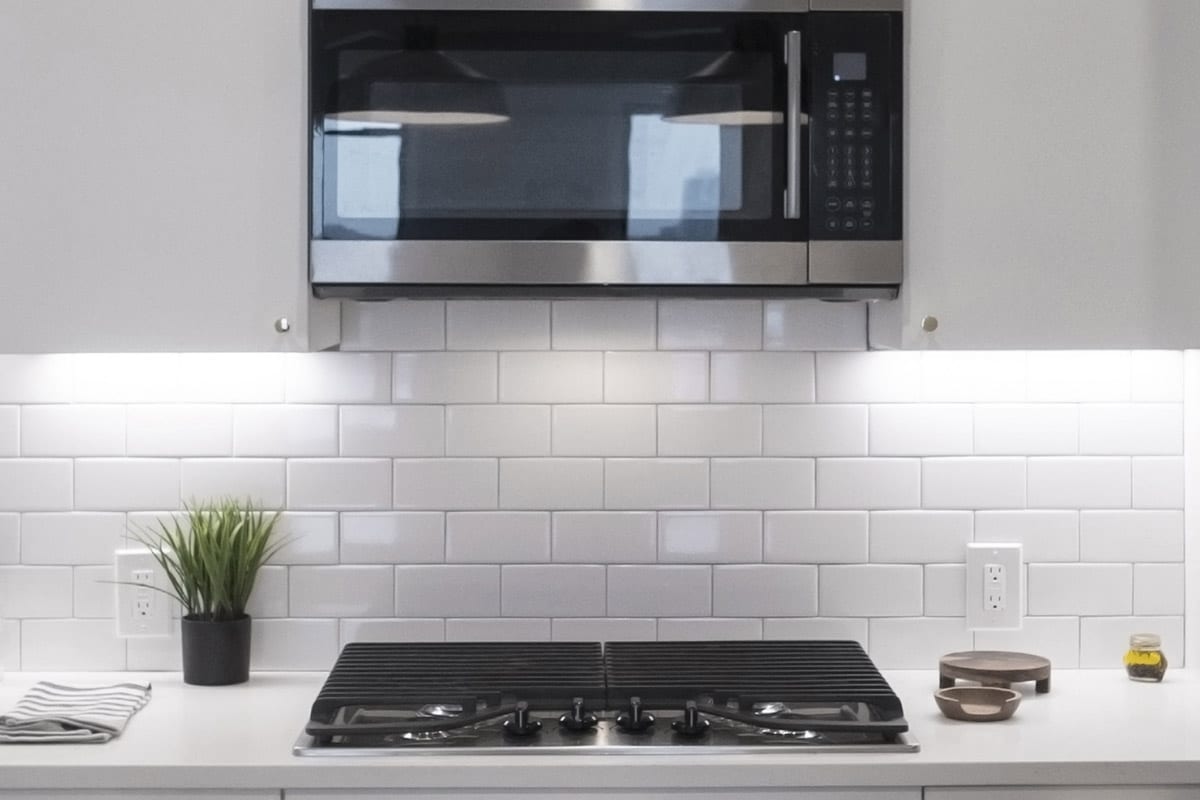




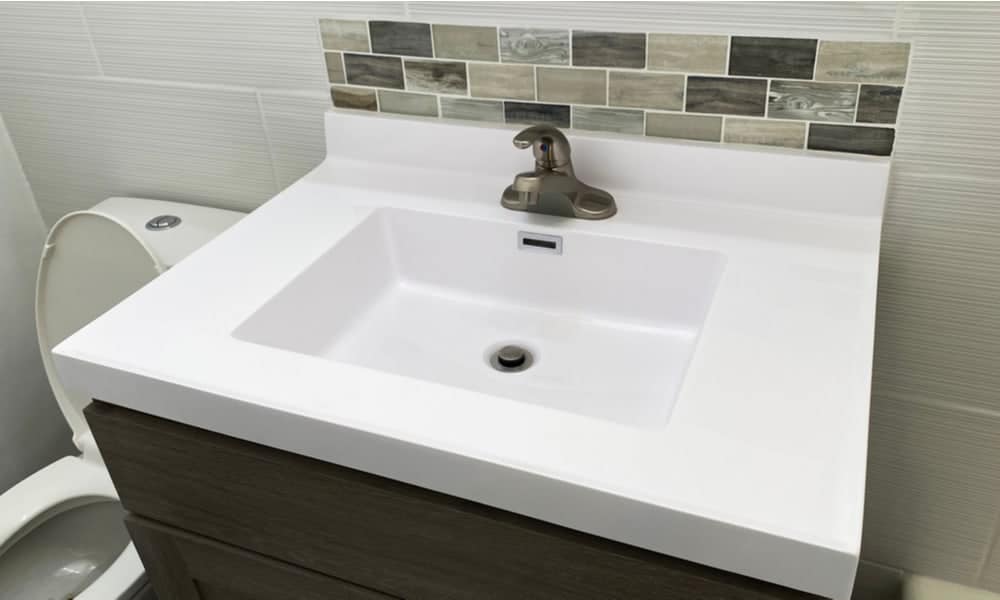
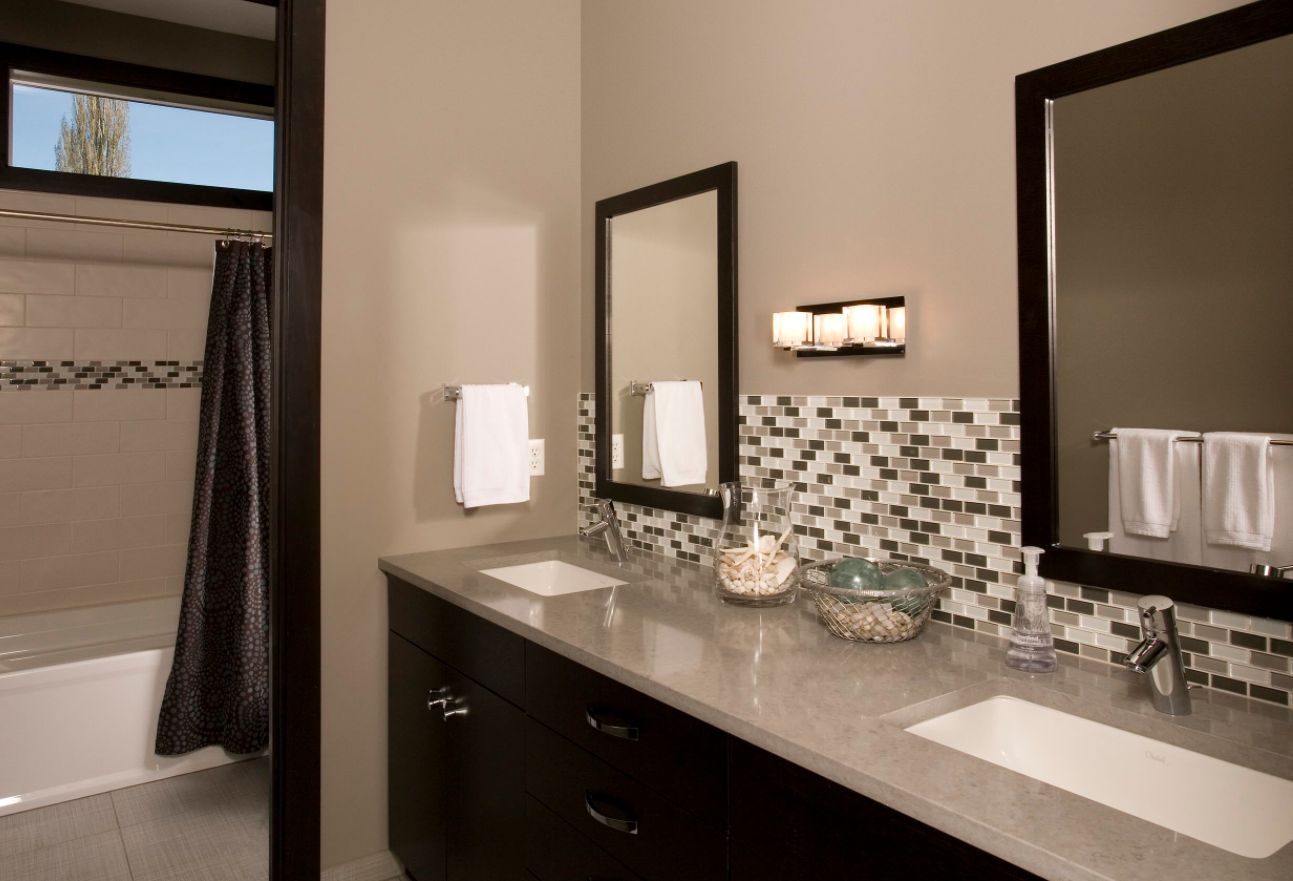












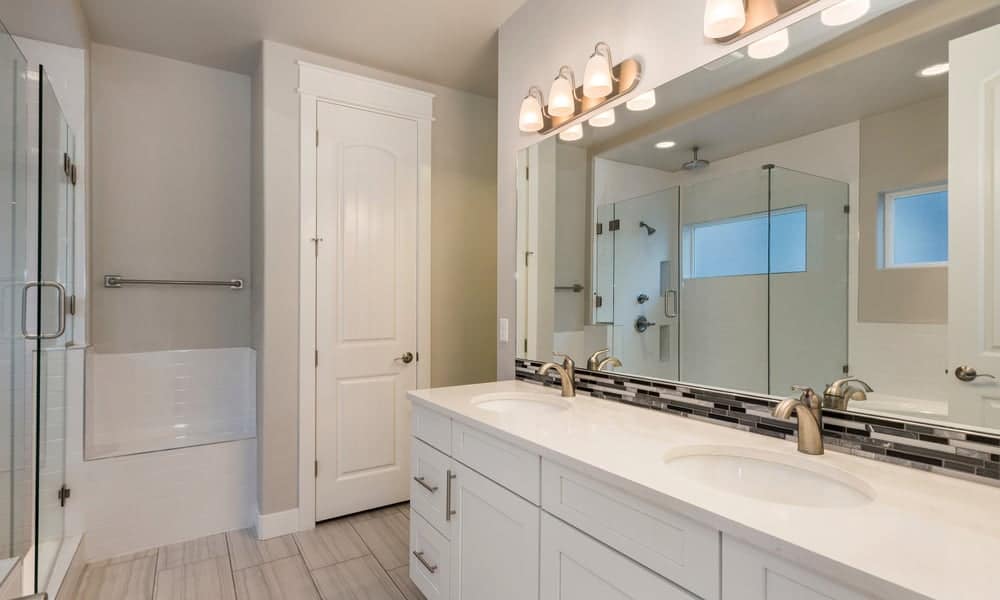




:max_bytes(150000):strip_icc()/Bathroomtilebacksplash-GettyImages-491673958-fa2ce7b1fdba4b4cb4cc25fc0790795a.jpg)


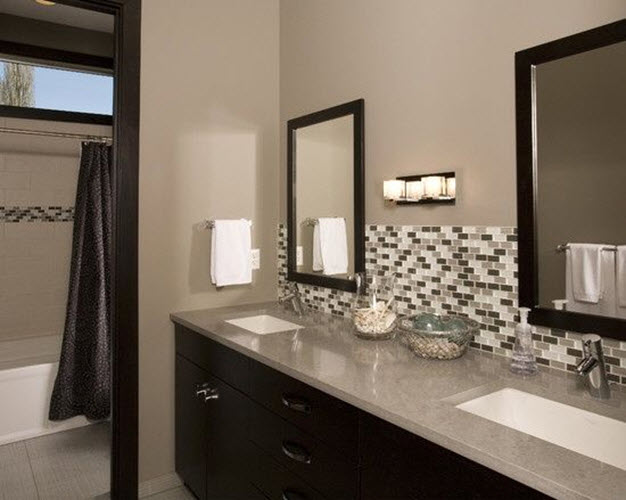
/Bathroomtilebacksplash-GettyImages-491673958-fa2ce7b1fdba4b4cb4cc25fc0790795a.jpg)














